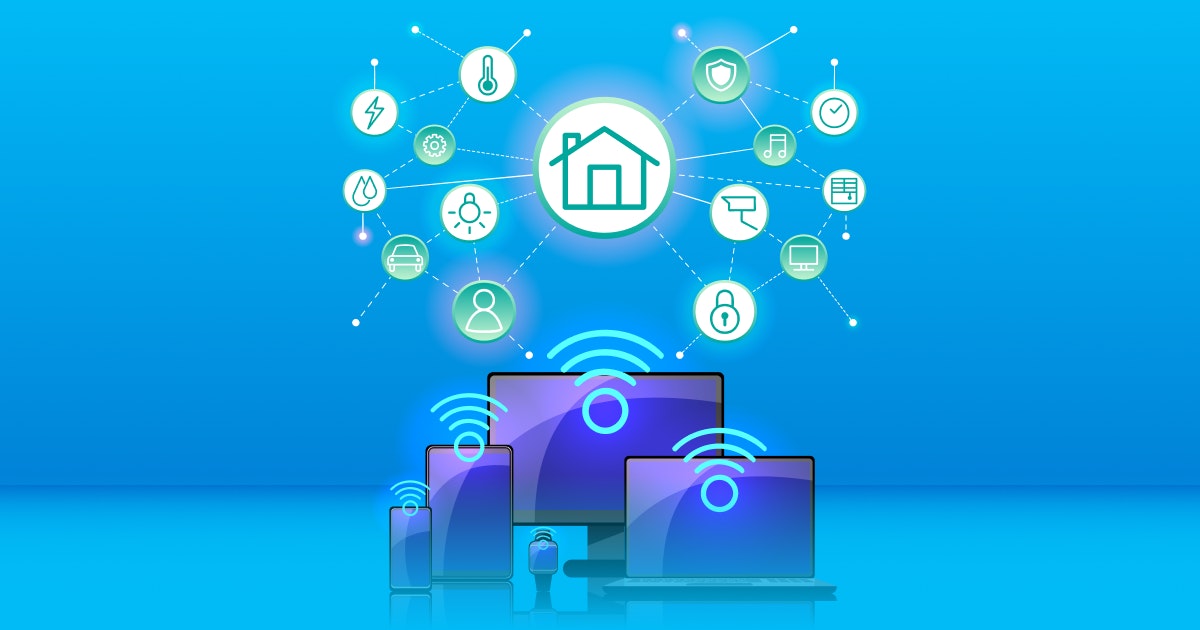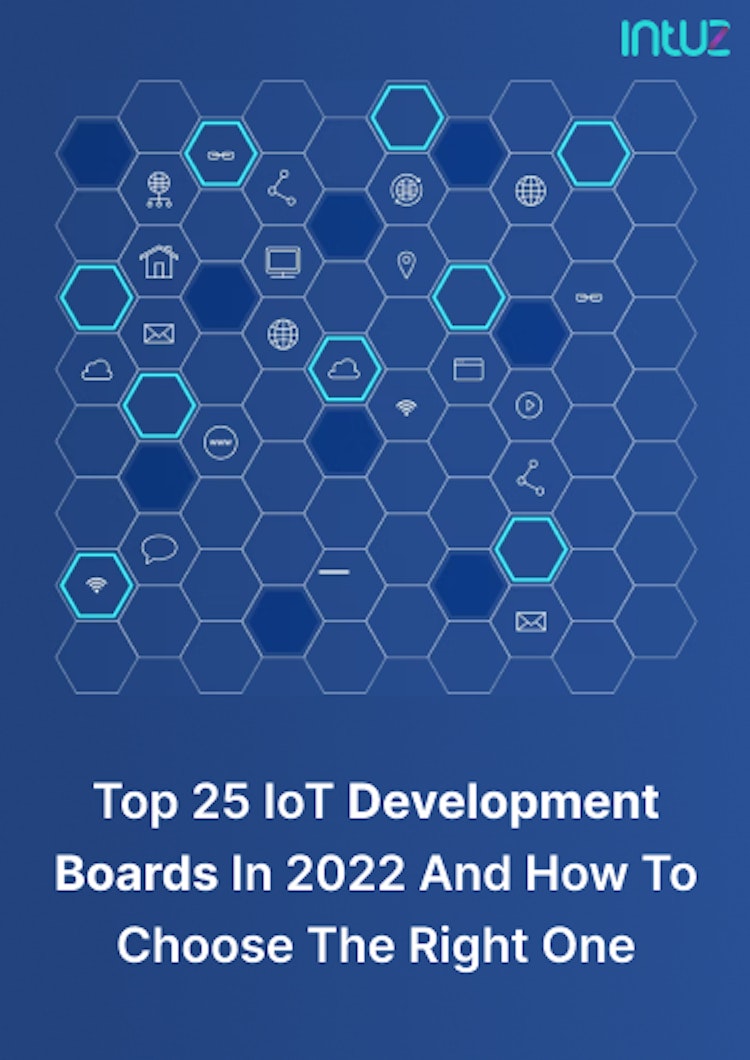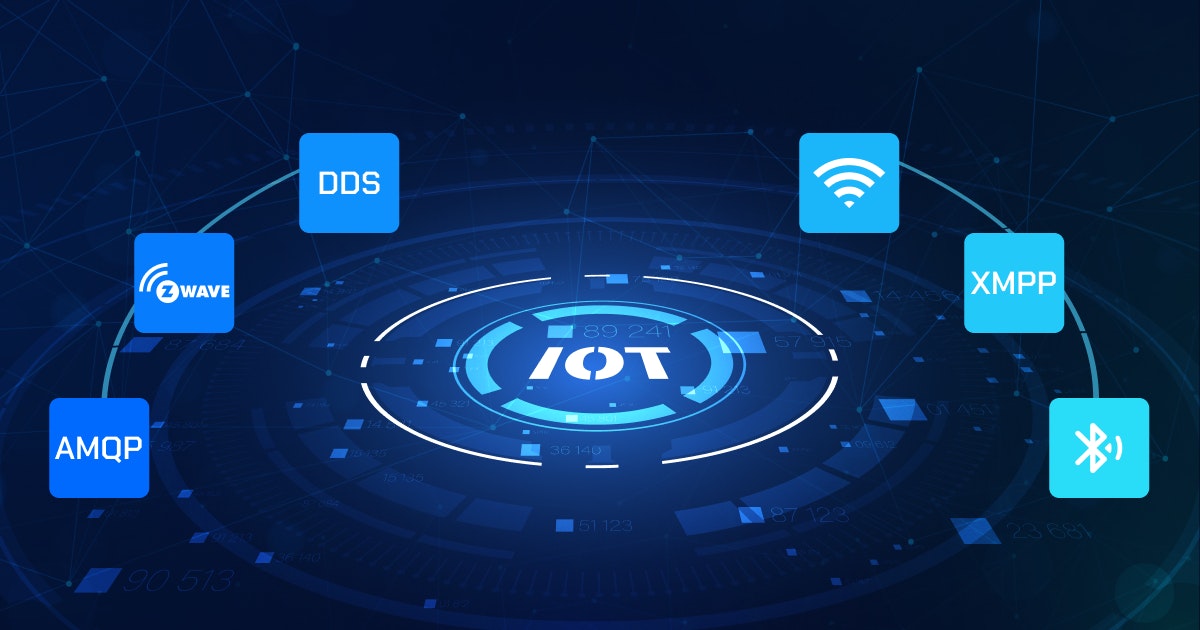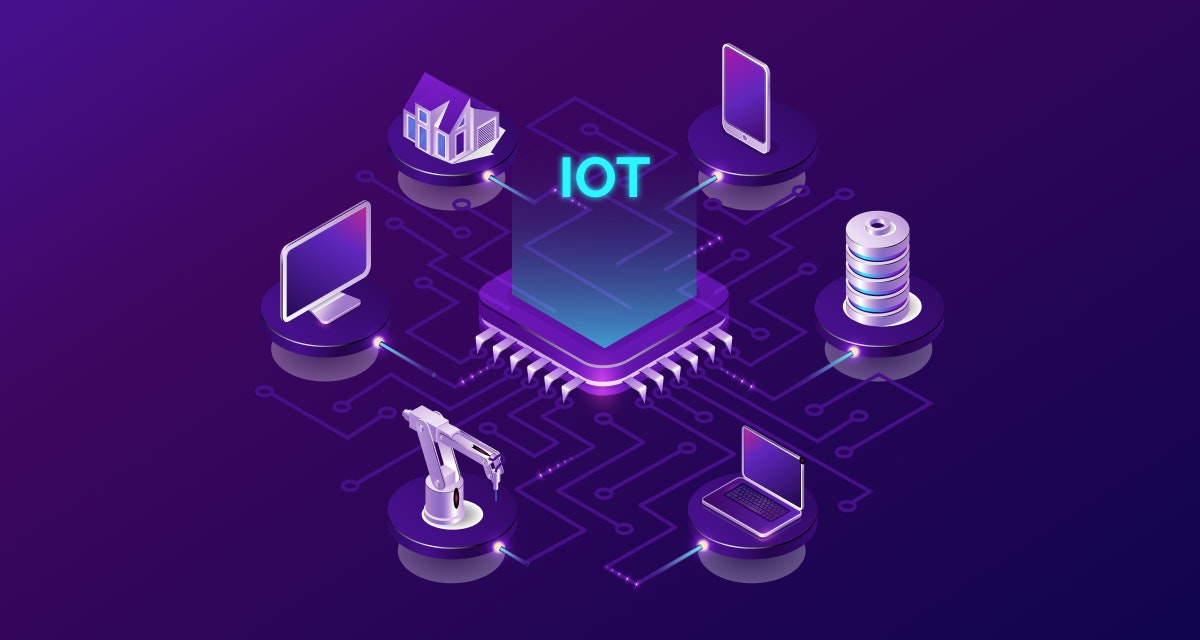Table of Content
Think of IoT, and it is hard not to think that it makes "dumb" devices "smarter" by enabling them to transmit information over the Internet and communicate with end-users and other IoT-powered devices and systems. That is the beauty of IoT!
The connected (and super automated) "smart home" is an excellent example of IoT. Internet-run doorbells, thermostats, security alarms, and smoke detectors build a connected hub where data gets easily shared using gateways, modules, and sensors.
On the other hand, the end-users can remotely control the things in the hub - i.e., unlock doors, adjust temperature settings, and set a timer on coffee machines, among other things - from their smartphone!
Besides home, IoT has also found its relevance in various industries and settings. IoT is definitely making the world smarter and digitized, from medical devices that can detect Parkinson's disease to smart blackboards in schools.
But have you wondered if IoT without the internet is even a thing? Scratching your head? After all - it is the "internet" of things, right? How can the ecosystem even sustain itself without the Internet? Fret not! In this article, we will look at whether or not IoT can work without the Internet. But first, let us start with the basics:
What is IoT?
The network of physical items or "things" implanted with sensors, modules, gateways, and hardware that communicates and exchanges data with other devices and systems through the Internet is called IoT.
These devices include everything - from everyday domestic items to complex industrial machines. Thanks to low-cost computers, networks, significant data insights, and mobile development, physical items can communicate and gather data with little human intervention.
Digital systems can record, watch, and modify every event between connected things in today's hyper-connected environment. The physical and digital worlds collide, and they work together reasonably well.
Are You Ready to Implement Internet-Independent IoT Solutions?
Contact Us NowWhat is an example of an IoT device?
Any material object that can connect wirelessly to a network and has the ability to transmit data is an IoT device. Examples include anything that can be controlled by a smartphone app, including connected streetlights, smart thermostats in offices, and motion sensors.
Some larger objects may contain numerous smaller IoT components. For instance, a jet engine may now have thousands of sensors that collect and transmit data to ensure it runs effectively. Innovative city projects cover entire regions in sensors to comprehend and manage the environment on a massive scale.
What is the history of IoT?
The phrase "Internet of Things" was not used until Kevin Ashton, a British technology pioneer who co-founded the Auto-ID Center at MIT, created it in 1999. It caught on when Ashton used it as the subtitle of his presentation for a new sensor project he was working on.
However, that is not where the story of IoT began. The idea of connected devices was first introduced in 1832, although the name was not coined until 1999.
Even though it was possible to directly communicate between two devices by sending electrical impulses when the first electromagnetic telegraph was created, the creation of the Internet in the late 1960s marked the beginning of the real Internet of Things.
The first IoT gadget was created at Carnegie Mellon University in the early 1980s. To avoid making a trip to an empty Coca-Cola vending machine, a group of university students devised a technique to enable the machine on campus to report on its contents through a network.
They added microswitches to the device to report on the availability and temperature of Coke cans. Then, in 1990, John Romkey made the first toaster connection to the Internet.
A year later, a group of University of Cambridge students utilized a web camera to document their coffee usage. They came up with the concept of using the first web camera prototype to keep an eye on the coffee quantity in their computer lab's coffee maker.
To accomplish this, they programmed the web camera to capture pictures of the coffee maker three times every minute. This made it possible for everyone to see if the coffee was available when the photographs were distributed to nearby computers.
There are currently about 13.1 billion IoT-connected gadgets; by 2030, research shows there will be over 29 billion connected devices. Fun fact: the consumer segment accounted for around 60% of all IoT-connected devices in 2020!
How does IoT work?
Devices with in-built sensors are connected to an IoT platform, which integrates data fetched from different devices and applies analytics to share the most valuable info with apps designed to address specific requirements. An IoT platform is so powerful that it can precisely highlight what information is useful and what can be kept aside or ignored altogether.
The data collected is handy for detecting patterns, spotting problems before they occur, and making recommendations. For instance, if you run a car manufacturing business, you might want to know which optional components, such as alloy wheels or leather seats, are most popular. With the help of IoT, you can:
Use sensors to detect the most popular areas in your showroom.
Identify available sales data to see which components are selling the fastest.
Align the sales data automatically with supply, so your showroom always has the fast-selling items in stock.
You see, the information gathered by IoT-connected devices empowers you to make smart decisions about your business and other nitty-gritties, including which components to stock up on based on real-time data.
With the insight provided by advanced IoT analytics, you can make your processes smarter and product offerings on-point! If you think about it - IoT allows you to keep up with your customer preferences and deliver what your target audience really desires! This saves both time and money.
Here is a recap on how IoT works: A typical IoT landscape comprises web-enabled smart devices that use embedded systems, such as processors, sensors, and communication gear, to gather, send, and act on data they collect from their environments.
By connecting to an IoT gateway or edge device, which either sends data to the cloud for analysis or analyzes it locally, IoT device communication happens in real-time. They occasionally interact with similar devices and take action based on the information they exchange.
Even though end-users can engage with the instruments to set IoT devices up, give them instructions, or retrieve the data, the gadgets accomplish the majority of the job without their help. Most IoT systems operate according to these four key components:
1. Sensors
These gadgets communicate with the outside physical world. They gather and store the data that is affected by external influences. A sensor registers changes in the environment and detects them. This quality makes sensors very practical for IoT apps.
2. Connectivity
The data that sensors gather is processed by cloud servers. But they need platforms to achieve that. All IoT devices, including sensors, routers, gateways, user apps, and media, must be connected to each other to function how they are supposed to!
3. Data processing
When all the data has been transmitted to the platform, functions are run on it to process it and provide back the required outputs. Alternatively, data analysis is required, and a faster analysis is needed to produce better outcomes.
4. User experience
The output end-users view on their screens is provided by this stage, which is close to the user. Each IoT device has a unique interface since they all have various tasks or purposes of fulfilling.
IoT Operational Technology (OT): Convergence With IT & Key Differences
Learn MoreWill IoT work without the Internet?
Yes, IoT (Internet of Things) devices can work without an internet connection, although with limited functionality. They can communicate locally using protocols like Bluetooth or Zigbee, process data on-device, and be controlled through a local hub or controller.
IoT is sometimes loosely defined as a collection of edge sensors and actuator devices connected to cloud-based computing and analytics resources via the Internet.
The edge IoT devices are the problem. They fulfill various roles depending on the device type, and they essentially serve as network entry or exit points.
However, the more functions IoT devices need to perform, the more edge systems are reliant. Moreover, not everyone has a direct Internet connection.
So, can IoT function without the Internet? Let us start by looking at some forecasts for the immediate future. A Statista study shows there will be over 29 billion connected devices. The US Census Bureau currently assesses the global population to be just 7.7 billion people, which amounts to nearly six devices per person.
If every human being on this planet is linked to the Internet, that will result in a sizable number of Internet connections. However, as we already know, not all IoT devices are directly connected.
Most of the time, a wide range of devices in a home setting or factory speak to a router using a non-IP bus like ZigBee. The router will then be the only device to stay connected to the Internet, enabling communication with the system's remote components.
You will find that removing a high-performance IP-based network often benefits some devices and tiny sensors. For instance, the existence of the IP address increases a device's susceptibility to hacking. Other apps could be situated in inaccessible areas or be based in remote rural areas, so they lack a consistent, dependable internet connection.
The options can be limited to logging data into a device, then moving it to a location for analysis to produce actionable insights and recommendations on a memory stick. But even without the Internet, long-distance communications are possible with the correct tools.
The long-distance device connectivity network, Thingstream, based on Unstructured Supplementary Service Data (USSD) communications, is one powerful example. Without using the Internet at all, USSD provides secure IoT connectivity.
As a Low Power Wide Area Network (LPWAN), LoRaWAN® is also an excellent choice. Due to gateways that operate on standard IP networks, IoT devices can now communicate at distances ranging from a few kilometers to tens of kilometers, depending on the environment.
The information shown above shows that there are a large number of IoT devices that can operate without an Internet connection.
So, do IoT devices need the Internet to work?
Despite not needing the Internet, IoT takes its name from it. Instead, think of IoT as objects that utilize the same technology as the Internet. Here is a twist: The IoT has immense value even without the Internet. Let us use an automated soil irrigation system as an example:
Actions: Programmable activities are made feasible by the IoT, such as turning off the water when the soil is sufficiently wet.
Intelligence: Learning is made feasible by the IoT - for instance, how much water the soil requires daily.
Data: When there is an Internet connection, the IoT technology enables you to monitor the soil and upload the information for analysis in real-time.
Interaction: Users nearby can communicate with the soil sensor, even if the data stays put.
Other systems from IoT that function well without it include:
Energy-saving lamps that shut off when no one is in the room
Store shelves that alert employees when they get empty
Office desks that adapt quickly to the human body
None of them are dependent on the Internet to function. It is, however, true that incorporating an Internet connection could make them better by including remote access. It will also assist in gathering all the required information from various places. Still, IoT devices can function without the Internet and rather conveniently, we must add!
How to build an IoT solution without the Internet
Now, let us discuss how to integrate smart home automation without the Internet. Most people would naturally believe that the Internet is necessary to operate a smart home efficiently, given that automation is next to impossible without the Internet.
The fact is that since the 1960s, home automation has advanced and been used to control things like air conditioners, gardening, and home security. Smart home automation and IoT gadgets are more of natural evolution.
Turning to internet-enabled smart home automation is unnecessary even though all IoT devices and software indicate that they need a robust internet connection to work.
Many tech-savvy individuals prefer maintaining an integrated smart home not connected to the Internet to reduce the likelihood of having their system and personal data compromised or hacked. It is, therefore, feasible to build a smart house without the Internet. But careful design and intelligent networking are needed.
An IoT ecosystem is a puzzle: Piece it together!
Choosing a central gateway to connect all your IoT systems and devices is the first step toward building a smart environment, not internet-reliant. This arrangement allows your devices and IoT technology to communicate with one another and gives you control over them.
It is essential to ensure they can operate without an internet connection because several hubs on the market have different features and capabilities. Integrate your devices and IoT technology after setting up a central gateway or command center. However, the items and equipment you choose must have specific connectivity features built-in or integrated.
Most IoT or smart gadgets that can function without an internet connection will have wireless "send and receive" mechanisms. Z-Wave or Zigbee systems are often the most popular ones used in such a scenario.
Make the links and join the dots.
Now that you have a central hub and all your equipment and appliances have wireless connectors of the Z-wave or Zigbee variety, you can start setting up your automation network. After all, how do IoT devices communicate?
You may need to invest in independent gadgets such as smart sensors, often included in internet-dependent systems, to get the desired outcomes.
These devices deliver critical data to your central hub, including temperature levels, motion detection, humidity levels, and so on. Your smart home, for instance, cannot predict your individual preferences or commands without this knowledge.
You will be able to ensure total independence and freedom from outside sources, even though this may require a little more labor and money than an internet-driven smart system. This prevents system failures caused by lost internet connectivity and totally avoidable security breaches from hackers.
Create Robust, Internet-Independent IoT Solutions Tailored to Your Unique Needs.
Explore SolutionsYour very own independent, smart system
Because building an independently networked smart system is a technical and challenging process, it may be highly intimidating and frustrating for anyone without experience or training. Communication between devices is even possible without the Internet. You only need the correct set of technologies. Long-distance device connectivity can be based on USSD.
Without using the Internet, the USSD provides more secure IoT communication. If you want to use the Internet-free IoT, another option is LPWAN. Depending on the environment, this enables IoT devices to communicate over long distances with the aid of gateways that can connect with conventional IP networks.
If you want to know more about how IoT devices can run without the Internet or want to get an IoT app built by us, book a free, no-obligation consultation with our experts today!






